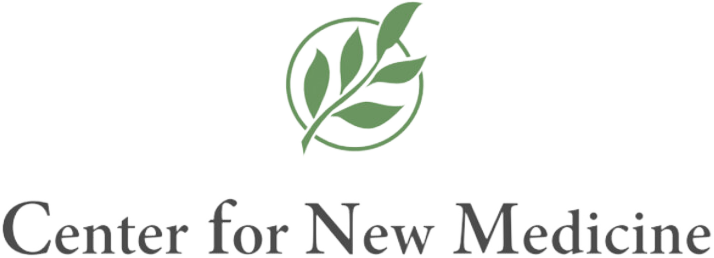If you or a loved one has been diagnosed with stage two breast cancer, it’s natural to want to understand what this diagnosis means and what steps to take next. At the Center for New Medicine (CFNM) in Irvine, CA, we know how overwhelming this news can be. That’s why we are committed to providing support, guidance, and treatment options tailored to your needs. In this article, we will walk you through the different stages of breast cancer as recognized by medical professionals, with a focus on understanding stage two breast cancer, so you can wrap your head around your diagnosis and what the future holds.
What Are the Different Stages of Breast Cancer?
Breast cancer is classified into several stages to help doctors determine the severity of the disease and the most appropriate treatment options. The staging system used by medical professionals is based on the size of the tumor, whether the cancer has spread to the lymph nodes, and whether it has spread to other parts of the body. The stages range from stage zero (non-invasive) to stage four (advanced, metastatic cancer). Let’s break down the stages to give you a clearer picture:
-
Stage 0 (Carcinoma in Situ)
Stage 0 breast cancer refers to the presence of abnormal cells in the milk ducts or lobules that haven’t spread outside the initial location. This stage is also referred to as “in situ” cancer and is considered non-invasive, meaning it hasn’t spread to surrounding tissues.
-
Stage 1
Stage 1 breast cancer is considered early-stage cancer. The tumor is small, usually less than 2 cm, and hasn’t spread to nearby lymph nodes. This stage is highly treatable, and most patients have an excellent prognosis with early detection and appropriate treatment.
-
Stage 2 (Early Invasive Breast Cancer)
Stage two breast cancer is characterized by a tumor that is either between 2 cm and 5 cm in size or is a smaller tumor that has spread to nearby lymph nodes. This stage is further divided into two subcategories:
- Stage 2A: The tumor is smaller than 2 cm but has spread among one to three nearby lymph nodes, or the tumor is between 2 cm and 5 cm without lymph node involvement.
- Stage 2B: The tumor is between 2 cm and 5 cm and has spread among one to three lymph nodes, or the tumor is larger than 5 cm but has not spread to lymph nodes.
For those diagnosed with stage two breast cancer, understand that the cancer is still confined to the breast area and the nearby lymph nodes, making it treatable with surgery, radiation, and chemotherapy in many cases. This stage often has a good prognosis when diagnosed early.
-
Stage 3 (Locally Advanced Breast Cancer)
Stage 3 breast cancer involves larger tumors or a greater number of lymph nodes affected, but it has not yet spread to distant parts of the body. This stage can be more challenging to treat, and patients often require a combination of surgery, chemotherapy, and radiation therapy.
-
Stage 4 (Metastatic Breast Cancer)
Stage 4 breast cancer, also known as metastatic breast cancer, means that the cancer has spread to other organs or distant parts of the body, such as the bones, liver, or lungs. This stage is considered advanced and typically requires more aggressive treatment options to control the cancer and improve the patient’s quality of life.
Understanding Stage Two Breast Cancer
Understanding stage two breast cancer is significant because, while it is still considered an early form of breast cancer, it is invasive, meaning the cancer has spread beyond the original tumor site. For many patients, stage two breast cancer can be understood and treated successfully with a combination of therapies. The specific treatment plan will depend on factors such as the size of the tumor, whether the cancer has spread to the lymph nodes, and whether the cancer cells have specific characteristics (e.g., hormone receptor-positive, HER2-positive).
Treatment Options for Stage Two Breast Cancer
Patients should understand that treatment for stage two breast cancer may include one or more of the following:
-
Surgery
Surgical options are often the first line of treatment for stage two breast cancer. The goal of surgery is to remove the tumor and any affected tissue. There are two main types of surgery:
- Lumpectomy: The tumor and a small margin of surrounding tissue are removed, and the rest of the breast is preserved.
- Mastectomy: The entire breast is removed if the tumor is large or there are multiple areas of cancer in the breast.
-
Chemotherapy
Chemotherapy may be recommended before or after surgery to shrink the tumor (neoadjuvant chemotherapy) or to reduce the risk of recurrence after surgery (adjuvant chemotherapy). Chemotherapy uses drugs to target and kill cancer cells, but it can also affect healthy cells, which is why it may cause side effects.
-
Radiation Therapy
Radiation therapy is often used after surgery to target any remaining cancer cells in the breast or surrounding lymph nodes. It is particularly effective in reducing the risk of recurrence.
-
Hormone Therapy
If your breast cancer is hormone receptor-positive, hormone therapy may be recommended. This therapy works by blocking hormones such as estrogen and progesterone, which can fuel the growth of certain types of breast cancer cells.
-
Targeted Therapy
Targeted therapies are designed to target specific molecules involved in the growth and spread of cancer cells. For example, if your cancer is HER2-positive, targeted therapies such as trastuzumab (Herceptin) may be used to block the HER2 protein and prevent the cancer from growing.
What Does the Prognosis Look Like for Stage Two Breast Cancer?
The prognosis for stage two breast cancer, when understood as stage two, is generally very good, especially when diagnosed early and treated appropriately. The survival rates for stage two breast cancer are relatively high, and many patients go on to live long, healthy lives after treatment. However, as with any cancer diagnosis, the specific prognosis will depend on various factors, including the cancer’s grade, your overall health, and how well you respond to treatment.
How the Center for New Medicine Can Help
At the Center for New Medicine in Irvine, CA, we understand the challenges that come with a breast cancer diagnosis. We offer a comprehensive approach to cancer treatment, combining traditional therapies with holistic methods to support your body’s healing process. If you’ve been diagnosed with stage two breast cancer and need to understand it better, our team is here to help you navigate this journey with care, compassion, and expertise.
To learn more about our approach to breast cancer treatment and how we can support you, visit cfnmedicine.com/qt-breast-cancer today.
At CFNM, we are dedicated to providing you with personalized care to optimize your health and support your journey to healing. Whether you are in the early stages of diagnosis or seeking additional support, we are here to help you every step of the way. Schedule a consultation today!

